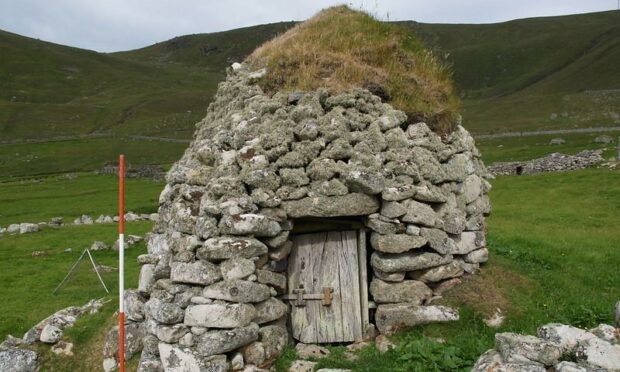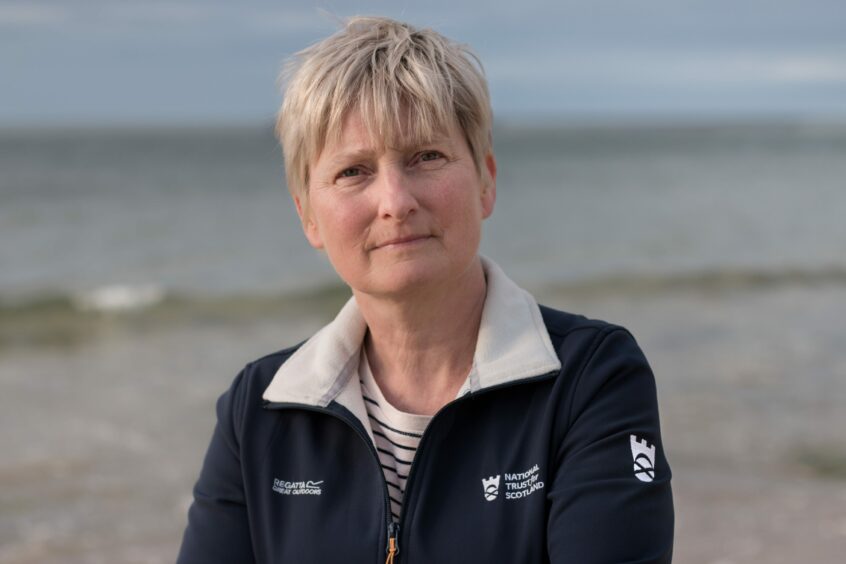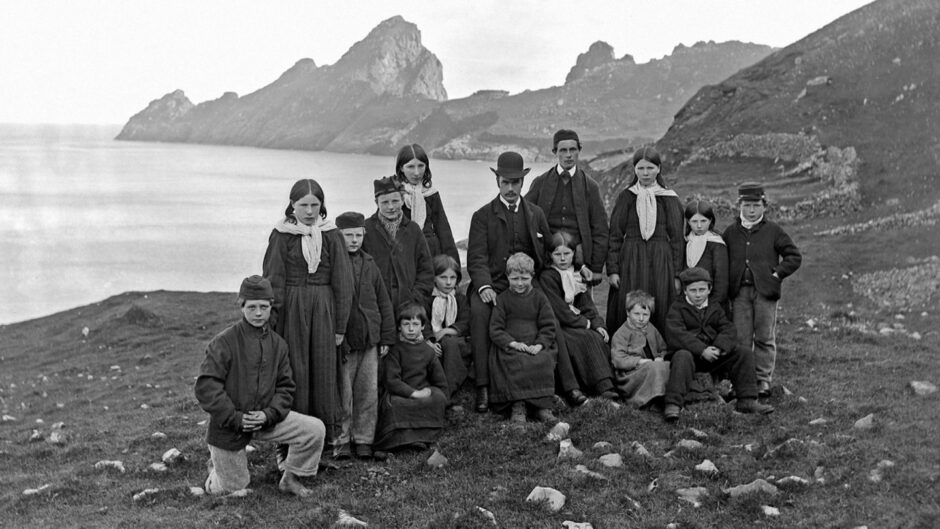Conservation charity the National Trust for Scotland is piecing together the story of Lady Grange, one of the most notable residents who lived on St Kilda.
After winter storms caused the collapse of the stone ‘cleit’ believed to be built on the site of her former house, the trust has said it will be investigating the structure and the way in which it was built.
It will then be restored using traditional building methods.
Lady Grange was sent to St Kilda by her husband James Erskine, a Jacobite supporter who feared his wife would expose his sympathies to the British Government.
This particular cleit – a circular stone structure with a unique St Kildan turf roof – is thought to date from the mid-19th century. They were used as storage huts for food, or as a place of shelter by islanders.
But the structure may incorporate elements of the building where Lady Grange – Rachel Chiesley – was held on St Kilda from 1734 to 1741.
1,200 similar cleits on St Kilda
St Kilda’s main island, Hirta, has more than 1,200 similar cleits which undergo an ongoing programme of monitoring and maintenance.
This helps to keep them standing against the elements in this remote and exposed location, 40 miles west from the Isle of Lewis.
The highest wind speed ever recorded in the archipelago was 144mph.
Repairing the damage to Lady Grange’s house will be one of the most challenging tasks faced by the trust in over half a century of conservation work on St Kilda, according to archaeologists.
The National Trust for Scotland’s Western Isles manager Susan Bain said: “This is a fascinating structure, with a really interesting history.
“We now have an unparalleled opportunity to discover so much more about it. Over the coming months, we’ll not only be investigating the cause of the collapse, but we’ll also be able to analyse the building techniques and materials.
“We’ll also be able to get a really good look at the roof and take soil samples that will help us understand so much more about how the St Kildans created these unique buildings.”
The trust also hopes to find out once and for all if there are any elements of the earlier structure in the ‘cleit’ where Lady Grange spent her time on Hirta.
Lady Grange’s cleit has never been repaired
Ms Bain continued: “Our records suggest that it has never previously been repaired but we’d love to hear from anyone who may have images of the structure that could shed light on its more recent history.
“It’s never good when a structure sustains damage, but the trust and our talented contractors are very experienced in dealing with these issues on St Kilda and making repairs on an ongoing basis.
“Without our work to protect and restore the buildings here, very few would still be standing. We are very grateful to everyone who supports our charity for helping make our work to conserve the UK’s only dual world heritage site possible.”
As well as seeking information from the public, the conservation charity is accepting donations to help with the cost of this investigation, analysis and subsequent repairs. Contributions can be made at www.nts.org.uk/caring-for-st-kilda.
Unesco world heritage site
St Kilda is the UK’s only dual Unesco world heritage site and home to nearly one million seabirds, including the UK’s largest colony of Atlantic puffins.
After 4,000 years of human presence on the island, St Kilda was evacuated on August 29 1930 after the remaining 36 islanders voted to leave as their way of life was no longer sustainable.
As well as more than 1,200 stone cleits, there are also blackhouses and cottages, drystone enclosures, a church, schoolroom and manse, which are all designated as scheduled monuments.












